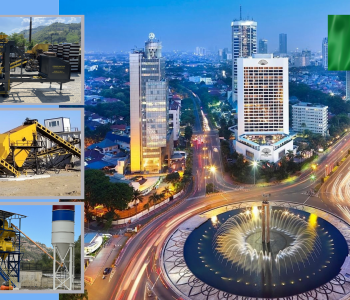Discovering Cairo: Egypt’s Historic and Modern Metropolis
Introduction
Cairo, the sprawling capital of Egypt, is a city where ancient history intersects with modern vibrancy. Known for its rich cultural heritage and significant historical landmarks, Cairo is also a bustling metropolis that has embraced contemporary development. This article explores Cairo’s historical background, recent advancements, and the crucial role of the construction sector in shaping its future.
Historical Overview
Cairo, founded in the 10th century by the Fatimid dynasty, has long been a center of power and culture in the Arab world. Its strategic location along the Nile River and its historical significance as a trade and intellectual hub have contributed to its prominence. Cairo was the capital of the Mamluk Sultanate and later became a major center during the Ottoman Empire. The city’s history is richly layered, with significant sites such as the Giza Pyramids and the Sphinx serving as testament to Egypt’s ancient past. Cairo’s role as a cultural and political center continued through the colonial era and into modern times, cementing its place as a key player in the Arab world.
Modern Cairo
Today, Cairo is one of the largest and most influential cities in Africa and the Middle East, with a population of over 20 million in the metropolitan area. The city is characterized by a dynamic mix of old and new, where historical landmarks coexist with modern skyscrapers and bustling commercial districts. Cairo’s economy is diverse, with significant contributions from sectors such as trade, tourism, and manufacturing.
Current Developments
In recent years, Cairo has embarked on ambitious development projects aimed at modernizing its infrastructure and addressing urban challenges. One of the most notable initiatives is the New Administrative Capital project, a massive urban development planned to alleviate congestion in central Cairo. This new city will feature government buildings, residential areas, and commercial spaces, reflecting Egypt’s commitment to future growth.
Additionally, Cairo is enhancing its transportation infrastructure with projects like the Cairo Metro Expansion, which aims to improve connectivity and reduce traffic congestion. The city is also focusing on urban renewal projects, including the redevelopment of historic areas and the improvement of public spaces.
The Construction Sector
The construction sector in Cairo is vital for supporting the city’s growth and modernization. The sector is characterized by a variety of large-scale projects, including residential developments, commercial buildings, and infrastructure improvements. As Cairo continues to expand, the demand for construction materials and machinery is high.
Concrete Block Machines and Their Types
Concrete block machines play a crucial role in the construction industry in Cairo. These machines are used to produce a variety of concrete blocks that are essential for building projects. Here’s an overview of the types of blocks produced and the machines involved:
- Concrete Block Machines: These machines are used to manufacture concrete blocks for various construction needs:
- Semi-Automatic Concrete Block Machines: These machines require manual intervention for some processes. They are suitable for smaller-scale production and offer a cost-effective solution.
- Fully Automatic Concrete Block Machines: These machines operate with minimal human intervention, providing high efficiency and consistent quality. They are ideal for large-scale production and continuous operations.
- Types of Concrete Blocks:
- Hollow Blocks: Commonly used for walls and partitions, these blocks have voids that make them lighter and provide better thermal insulation.
- Solid Blocks: Used in load-bearing applications, these blocks are dense and offer high compressive strength.
- Paving Blocks: Designed for pavements, driveways, and walkways, these blocks come in various shapes and sizes and are built to withstand heavy traffic and weather conditions.
- Interlocking Blocks: These blocks fit together without mortar, making them ideal for both structural and decorative purposes.
- Curbstones: Used to define edges and boundaries along roads and pedestrian pathways, curbstones help in creating organized and safe urban spaces.
Common Construction Materials and Machinery
In addition to concrete block machines, several other types of machinery are integral to Cairo’s construction sector:
- Concrete Batching Plants: These plants produce concrete for various construction needs. They come in two main types:
- Stationary Concrete Batching Plants: Fixed installations suited for large projects, offering high production capacity and continuous operation.
- Mobile Concrete Batching Plants: Portable units that can be relocated to different sites, ideal for smaller projects or those requiring mobility.
- Crushers: Used for processing and recycling construction materials. They come in two main types:
- Stationary Crushers: Fixed installations used in large-scale operations, such as quarrying and aggregate production.
- Mobile Crushers: Portable units useful for on-site processing and recycling of construction debris.
Conclusion
Cairo is a city of remarkable contrasts, where ancient history and modern development coexist. Its rapid growth and ambitious projects reflect its role as a major player in the Middle East and Africa. The construction sector is crucial in supporting Cairo’s evolution, with advanced machinery and a diverse range of materials driving the city’s expansion. As Cairo continues to progress, it remains a symbol of both historical significance and modern dynamism.


